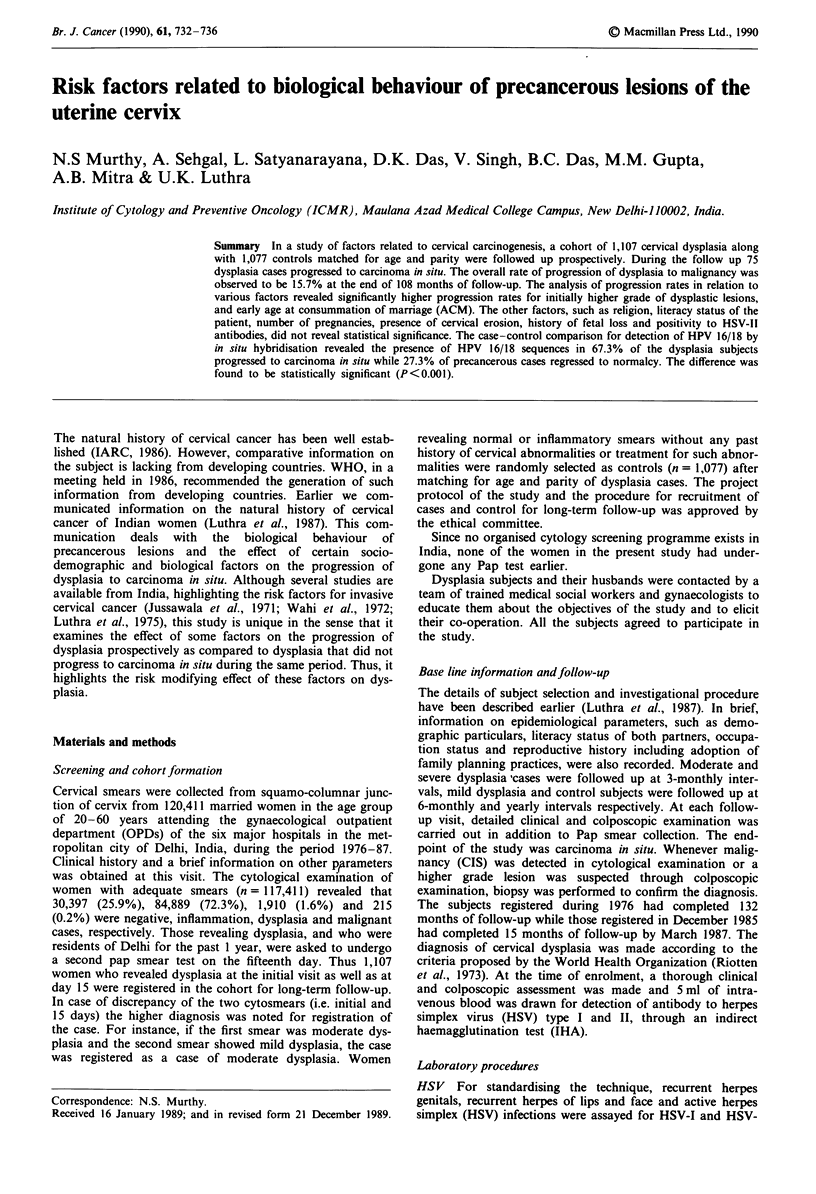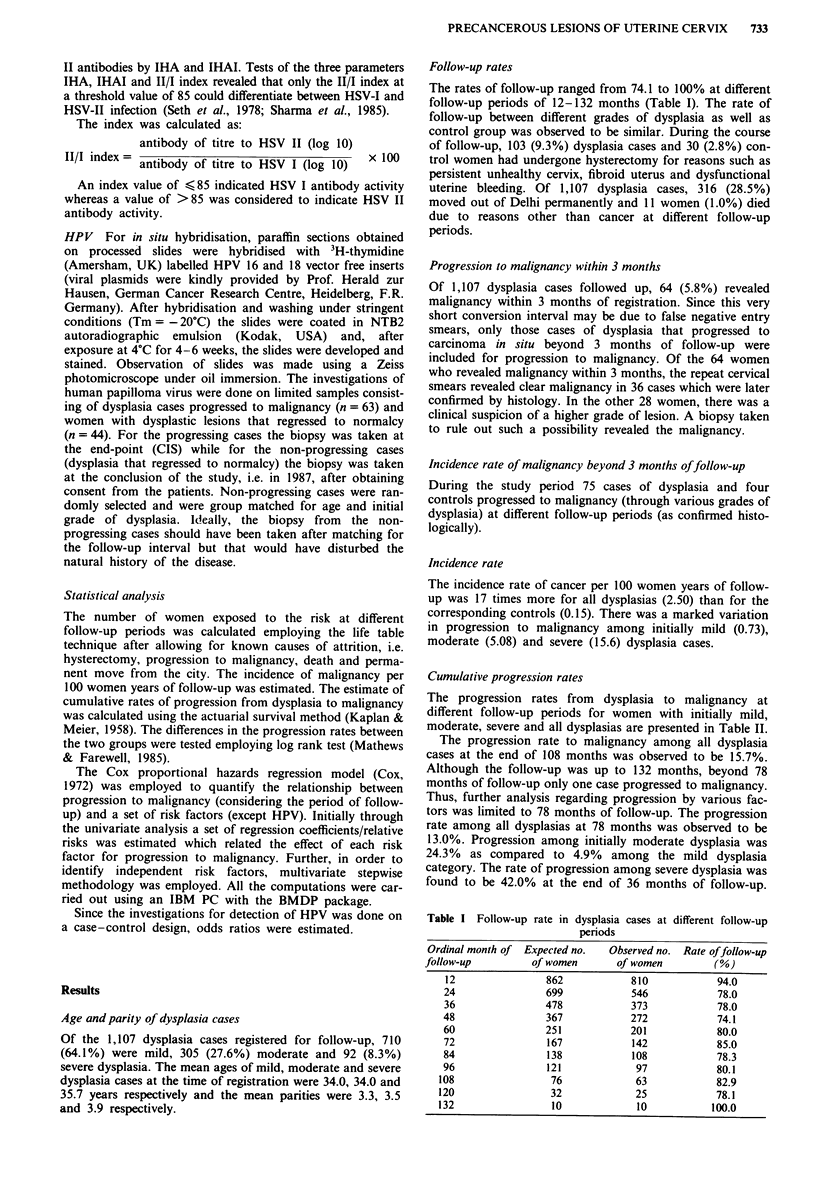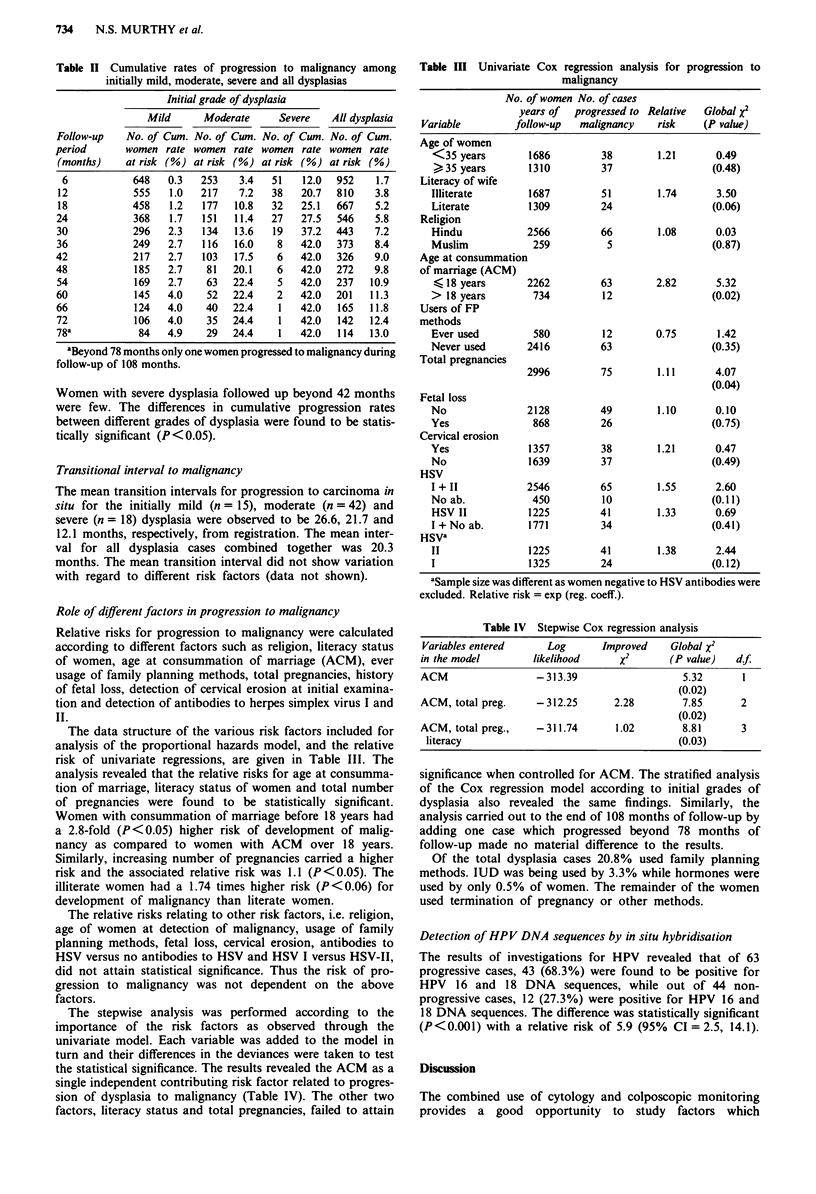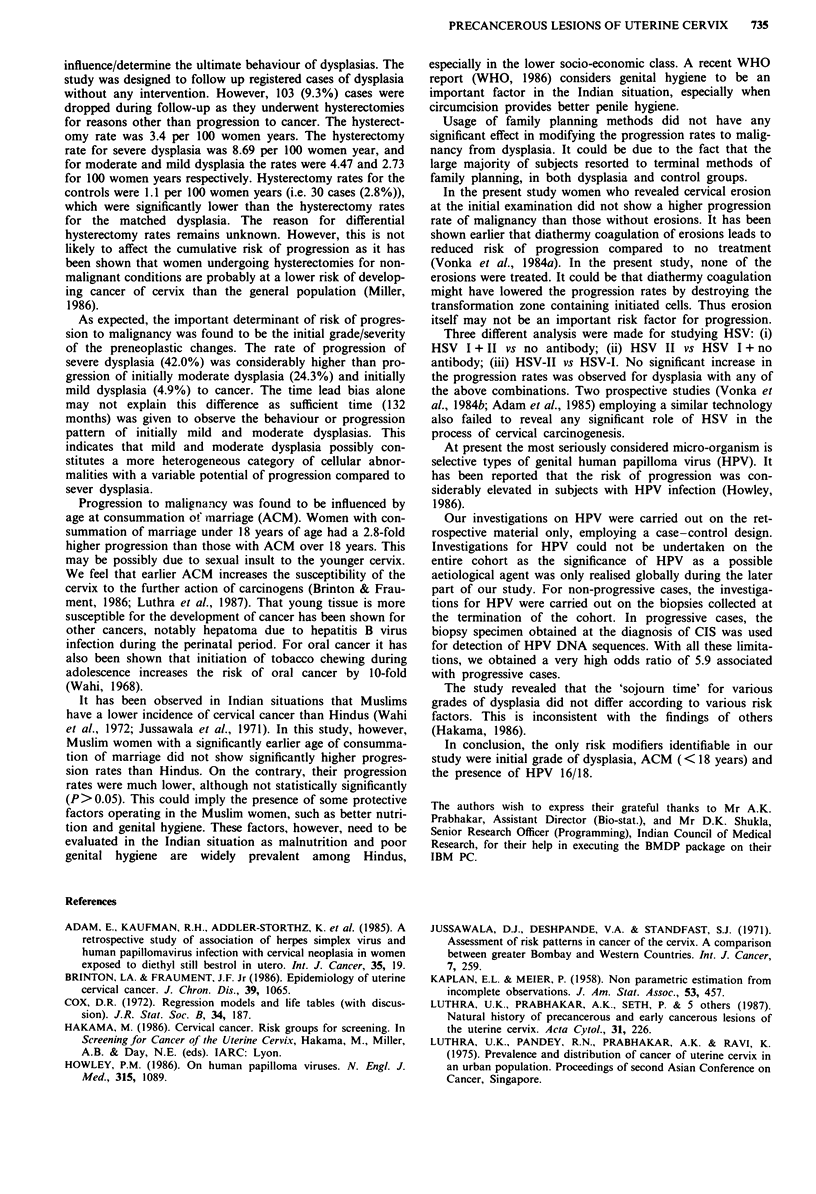Abstract
In a study of factors related to cervical carcinogenesis, a cohort of 1,107 cervical dysplasia along with 1,077 controls matched for age and parity were followed up prospectively. During the follow up 75 dysplasia cases progressed to carcinoma in situ. The overall rate of progression of dysplasia to malignancy was observed to be 15.7% at the end of 108 months of follow-up. The analysis of progression rates in relation to various factors revealed significantly higher progression rates for initially higher grade of dysplastic lesions, and early age at consummation of marriage (ACM). The other factors, such as religion, literacy status of the patient, number of pregnancies, presence of cervical erosion, history of fetal loss and positivity to HSV-II antibodies, did not reveal statistical significance. The case-control comparison for detection of HPV 16/18 by in situ hybridisation revealed the presence of HPV 16/18 sequences in 67.3% of the dysplasia subjects progressed to carcinoma in situ while 27.3% of precancerous cases regressed to normalcy. The difference was found to be statistically significant (P less than 0.001).
Full text
PDF




Selected References
These references are in PubMed. This may not be the complete list of references from this article.
- Adam E., Kaufman R. H., Adler-Storthz K., Melnick J. L., Dreesman G. R. A prospective study of association of herpes simplex virus and human papillomavirus infection with cervical neoplasia in women exposed to diethylstilbestrol in utero. Int J Cancer. 1985 Jan 15;35(1):19–26. doi: 10.1002/ijc.2910350105. [DOI] [PubMed] [Google Scholar]
- Brinton L. A., Fraumeni J. F., Jr Epidemiology of uterine cervical cancer. J Chronic Dis. 1986;39(12):1051–1065. doi: 10.1016/0021-9681(86)90139-6. [DOI] [PubMed] [Google Scholar]
- Howley P. M. On human papillomaviruses. N Engl J Med. 1986 Oct 23;315(17):1089–1090. doi: 10.1056/NEJM198610233151710. [DOI] [PubMed] [Google Scholar]
- Jussawalla D. J., Deshpande V. A., Standfast S. J. Assessment of risk patterns in cancer of the cervix: a comparison between greater Bombay and western countries. Int J Cancer. 1971 Mar 15;7(2):259–268. doi: 10.1002/ijc.2910070210. [DOI] [PubMed] [Google Scholar]
- Luthra U. K., Prabhakar A. K., Seth P., Agarwal S. S., Murthy N. S., Bhatnagar P., Das D. K., Sharma B. K. Natural history of precancerous and early cancerous lesions of the uterine cervix. Acta Cytol. 1987 May-Jun;31(3):226–234. [PubMed] [Google Scholar]
- Seth P., Prakash S. S., Ghosh D. Antibodies to Herpes simplex virus types 1 and 2 in patients with squamous-cell carcinoma of uterine cervix in India. Int J Cancer. 1978 Dec;22(6):708–714. doi: 10.1002/ijc.2910220612. [DOI] [PubMed] [Google Scholar]
- Sharma B. K., Gupta M. M., Murthy N. S., Seth P., Parashari A., Luthra U. K. Role of HSV antibodies in precancerous & cancerous lesions of the uterine cervix--a prospective study. Indian J Med Res. 1987 Mar;85:282–288. [PubMed] [Google Scholar]
- Wahi P. N. The epidemiology of oral anc oropharyngeal cancer. A report of the study in Mainpuri district, Uttar Pradesh, India. Bull World Health Organ. 1968;38(4):495–521. [PMC free article] [PubMed] [Google Scholar]


